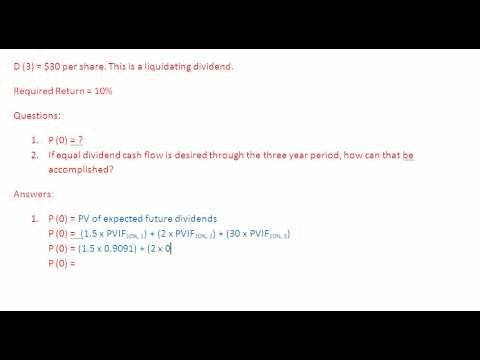Dividends Stock Repurchase and Policy
Post on: 16 Март, 2015 No Comment

We know that the value of a stock is equal to the present value of both its capital gains and its dividends. When a firm earns a profit. it has two options: reinvest in future growth (and provide its shareholders with capital gains) or pay a dividend (and provide its shareholders with cash today). Many firms, especially large stable firms (or cash cows ) bring in lots of cash as earnings, but have few investment opportunities. When this is the case, shareholders expect firms to distribute its earnings in the form of dividends. If positive NPV investment opportunities exist, a firm should never forgo an investment in order to pay a dividend; however, in real life, firm’s often view paying dividends as a commitment to its investors.
With extra cash on hand, firms may also choose to repurchase stock instead of issuing a dividend. For one, a firm may believe its stock is undervalued, and investing in its own stock may be a good investment opportunity. Firm’s may also choose to repurchase stock because it avoids the commitment to investors that paying dividends often brings — a firm without a steady cash flow may prefer to repurchase rather than to pay a one-time dividend that can’t be repeated. As well, firms with executive stock options often choose to repurchase stock because this strategy does not reduce the price of the stock. We know that the price of a stock drops with a dividend, making executive stock options less valuable. A stock repurchase will also help reduce dilution when executive stock options exist. Lastly, sotck repurchases provide a tax advantage for a company’s investors. A stock repurchase leads to capital gains — which are not taxed until realized; dividends are taxed immediately.
Dividend per Share: The total dividends paid divided by the number of shares outstanding. As a result, dividend per share equals the dollar amount of the total dividend received for each share owned.
Dividend Yield: Dividend per share as a percentage of the market price per share.
Dividend Payout Ratio: Dividends as a percentage of earnings per share.
Declaration Date: The date that the board of directors announcing a future payment of dividends.
Cum-Dividend: During this time, shareholders may purchase shares of the company and be eligible for the declared dividend. Shareholders are normally entitled to receive a dividend if they purchase a share three days before the record date. This ensures the corporation is notified as of the record date.
Record Date: The firm makes a list of all the shareholders who own stock as of this date and are therefore eligible to receive the dividends. This ensures that the cheques are sent to the right people.
Ex-Dividend: Two days before the record date. A shareholder who purchases a share at this time is not entitled to the upcoming dividend. The first day of this period may be called the ex-dividend date. On this date, the stock price falls by the amount of the dividend.
Types of Dividends
Regular Cash Dividend: The firm pays out cash from earnings to its shareholders.
Liquidating Dividend: The firm pays out to shareholders by reducing its capital account or selling assets. Bond covenants often restrict liquidating dividends.
Stock Dividend: Existing shareholders receive additional shares for every share owned. For example, a 5 percent stock dividend implies a shareholder receives one stock for every 20 owned.
Stock Split: A stock split is very much like a stock dividend however the number of new stocks created is often much larger. A two-to-one stock split is common, where a shareholder receives an additional share for each share owned. After this stock split, each outstanding share would be worth half its original value.
Finance Questions: Expected Return and Portfolio Return
Changes in interest rates represent the type of risk that can be categorized as: 1) Market risk 2) Economics risk 3) Firm-specific risk 3) Unsystematic risk _________________________________________________________________________________________ You own a portfolio that has 70% invested in asset A, and














